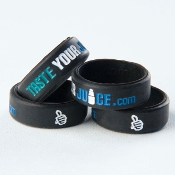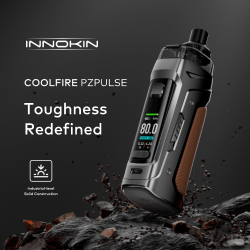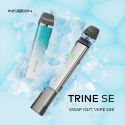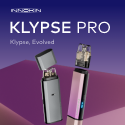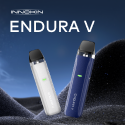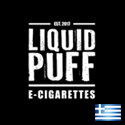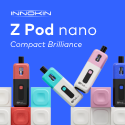I would like to personally welcome Battery Mooch to TasteYourJuice.com.
“Mooch” is well known in the industry as the “battery guy” and is quite popular on the ECF. I’ve worked with Mooch several times in the background and he’s always been quite helpful and knowledgeable in answering my questions.
Although I have some experience with battery testing, Mooch has all the experience I lack so I though it a good fit to offer him his own page here on TasteYourJuice.com.
If you look to the left, you’ll see the new Battery Mooch page under Information/Resources. His first article can be found there as well.
WELCOME MY FRIEND!
Who is Battery Mooch?
My name is John Muchow, some of you may know me as Mooch on ECF and FB and Mooch315
on ECR. I have been vaping since April, 2015 and haven’t smoked once since I
started!I was born and raised in New York City and still live there now. Since 1992 I have
been designing and building electronic devices for a large number of clients. My
first products were camera remote-control systems for sports photographers. As these
systems, and other devices, transitioned from wired to wireless the performance of
the batteries they used was very important as there was no way to replace them
during use. This led to me doing more and more battery testing and developing the
electronics to charge, test, and protect them.As battery technology advanced, from NiCd to NiMH to Li-Ion and now
ultracapacitor/Li-Ion hybrids, the devices I built and the battery testing I did
advanced along with them. I started specializing in power management electronics;
battery chargers, energy harvesters (for charging from heat, light, or
vibration/movement), power supplies, battery analyzers, electronic loads for battery
discharging, and battery management/protection systems. This is the work I still do
today.My clients have included the US Army, National Geographic, Sports Illustrated,
Eastman Kodak Company, and hundreds of other companies from large to small. Part of
the work I’ve done for a lot of my clients has been battery testing. Sometimes they
want to recommend a good battery to their customers. Other times they’re batteries I
have chosen to combine with my electronics to form a complete, protected power
source for them to incorporate into their products.Depending on my client’s requirements this testing can take up to several weeks to
complete. I use a subset of these tests when evaluating the batteries we use when
vaping. This includes continuous-current tests to establish the battery’s true (and
safe) ratings. They also help to determine if there’s any risk of venting if one of
our mods autofires or a mechanical mod’s button is accidentally pressed. The
pulse-current tests measure the degree of voltage sag we would see when vaping at
different current levels. Both types of tests are done the same way for every set of
batteries I test.This consistency in the testing allows for direct comparison of the performance of
different batteries even if the pulse discharging I do doesn’t match the way you
vape.Safety is my number one priority. While I often test at discharge current levels
that can result in unsafe battery temperatures, this is the only way to figure out
what a battery’s true and safe ratings are. No battery is totally safe but we can
certainly avoid taking unnecessary risks.My blog at ECF has the results of all my testing and a few articles on batteries,
battery safety, etc.:https://www.e-cigarette-forum.com/forum/blogs/mooch.256958/
I have also listed the equipment I use and the steps I follow when testing. This
allows anyone to replicate my tests if they want to:https://www.e-cigarette-forum.com/forum/blog-entry/my-cell-testing-equipment-and-setup.7431/
https://www.e-cigarette-forum.com/forum/blog-entry/whats-done-for-each-cell-test.7433/
My battery test results offer you a resource you can use when choosing a battery
that will not only be safer for the way you vape but will also give you great
performance.I’m looking forward to contributing to TasteYourJuice.com and I want to thank
PBusardo for the opportunity to help spread the word on exaggerated battery ratings
and battery safety!Mooch
Latest Battery Updates
A BATTERY MOOCH POST: Maximum 18650 battery ratings
If you are considering purchasing a particular 18650 battery, just remember that…
…there are none with a true continuous rating over 30A.
…there are none rated at 3000mAh with a true continuous rating over 20A.
…there are none rated over-3000mAh with a true continuous rating over 10A.
…pulse or battery company “max” ratings are useless and can’t be used to compare batteries.
A BATTERY MOOCH POST: Why do I still recommend rewrapped batteries?
Why did I remove the Aspire but include the iJoy, Efest, and other rewrapped batteries in my updated recommended batteries table?
https://www.e-cigarette-forum.com/forum/blog-entry/moochs-recommended-batteries.7593/
I removed the Aspire 18650 from the table because, whenever I can, I will no longer support and give free advertising to battery companies that lie to us about their ratings. Even if they have a great battery. If it is, just tell us the true ratings!
I am forced to keep the rewrapped 18350 and 26650 batteries in my table because we have no other choices. There are no Samsung, Sony, LG, or Panasonic/Sanyo batteries to choose from in those sizes. There is an old Panasonic and Sony 26650 that you can still find being sold but there are a huge number of fakes out there and the genuine ones are years old. Not worth taking a chance on in my opinion.
So, for now at least, I must keep 18350 and 26650 batteries with exaggerated ratings in the table. I don’t ever see that changing as the 26650 market is tiny and probably not worth developing new cells for, but who knows.
A BATTERY MOOCH POST: There are more fake LG HG2’s!
There is a different variety of fake LG HG2 being sold now and they’re even worse than the other one that showed up earlier this year. My sincere thanks to Matthew McKay for bringing it to my attention and for shipping a pair of them to me for testing!
The previous fake was a rewrapped 10A LG MG1. This version is a 5A battery, at most, or a very low grade battery with a higher current rating. Its voltage collapses at only 10A continuous. It doesn’t match any other battery I have so I don’t know what it actually is.
The discharge graphs show just how bad this fake is at 10A and 20A. The genuine HG2 is in green, the earlier fake HG2 is in red, and the newer fake (two of them) is in light and dark blue.
One good thing about this fake is that it is very easy to spot:
- There is a large gap around the battery between the top cap and the rest of the battery’s metal case. This is easy to spot even through the wrap.
- Like the other version of the fake HG2 this one uses a top insulating ring that is self-adhesive, semi-gloss/shiny, and white. Genuine HG2’s use a matte/textured, free-floating, off-white insulator ring.
These fakes were sold by an Amazon vendor, Amber Tech Express:
https://www.amazon.com/dp/B010NUUQFK/ref=cm_sw_r_fm_apa_oaq3xbTNM7VXX
But if you receive any of them from any vendor, do not use them! Their voltage quickly collapses when used, helping to prevent them from overheating, but they’re just not usable at any power level.
I cannot stress this strongly enough…only buy from known, trusted vendors! These include, but are not limited to, the following…
www.liionwholesale.com
www.imrbatteries.com
www.illumn.com
www.rtdvapor.com
www.batterybro.com
www.orbtronic.com
www.nkon.nl
www.akkuteile.de
http://ecoluxshopdirect.co.uk
The HG2 is a great battery and genuine HG2’s are available from a large number of vendors. If desired, alternatives include the 3000mAh Samsung 30Q and Sony VTC6.
https://imgur.com/a/zutvh
A BATTERY MOOCH POST: What makes A123 batteries different?
In preparation for posting the A123 26650 test results I wanted to briefly list how the lithium-ferrous-phosphate chemistry (“LFP”) batteries from A123 Systems, Inc., differ from the batteries we normally use when vaping.
A123 batteries have several advantages:
- Their low internal resistance means they are able to supply more current before overheating and they hold their voltage up better.
- LFP is the safest of the Li-Ion chemistries. It has a higher threshold temperature for thermal runaway and less violent reactions if the battery does go into runaway.
- LFP offers long cycle life, i.e., it is capable of a larger number of charge/discharge cycles than the other Li-Ion chemistries.
A123 batteries have a few disadvantages though:
- The 26650 is only 2400mAh and the 18650 is only 1100mAh.
- They have a nominal voltage of 3.3V versus the 3.6V/3.7V for the li-ion batteries we normally use. At high discharge current levels the voltage can be down close to 2.5V.
I hope to have the test report for the 26650 posted in a couple of days. I won’t be testing the 18650 as its capacity is so low. For more information about A123 technology, LFP chemistry, A123 battery specifications, and working with A123 batteries:
Overview of A123’s technology:
http://www.batteryspace.com/prod-specs/6610_1.pdf
ANR26650M1-B Brochure/Specs:
http://www.batteryspace.com/prod-specs/6610.pdf
APR18650M1-A Brochure/Specs:
http://www.batteryspace.com/prod-specs/6612.pdf
Cylindrical Battery Pack Design Guide:
http://www.formula-hybrid.org/wp-content/uploads/A123-Pack-Design-Guide-for-Cylindrical-Cells.pdf
https://imgur.com/a/8UefF
A BATTERY MOOCH POST: Do not use the Samsung 26F (ICR18650-26F) battery above 5A or 20W!
I’m getting more and more reports of the Samsung ICR18650-26F being sold with high power mods like the Smok H-Priv 220W.
This is ridiculous.
That is a 5.2A-rated battery and it will perform very badly above about 5A/15W. If used in a high power device it could heat the batteries up enough to damage them or even cause them to vent (not thermal runaway though).
Do not use the Samsung 26F at above 5A or 15W per battery.
https://imgur.com/a/A3yqa
A BATTERY MOOCH POST: These tables are not “pulse” ratings for Sony VTC batteries!
They are maximum response time tables for the battery management/protection system for a battery pack that uses Sony VTC batteries. You can see this in the section heading, “Over current protective circuit”, and in the description for the tables.
https://imgur.com/a/zpqrO
These are one time, emergency use only, protection response times for different discharge overcurrent levels (covered in red). They cannot be used as pulse ratings or even maximum pulse capabilities for VTC batteries. They only ensure that the battery doesn’t explode or catch fire. The battery can still be damaged or vent.
An actual rating would tell you the rest time between pulses and the criteria used to set the pulse rating (voltage sag? max temperature? cycle life?).
Do not use these discharge current levels as any type of indicator as to how hard you can run Sony VTC batteries or what “pulse” ratings they might have.
A BATTERY MOOCH POST: iJoy 40A 4200mAh 26650 Bench Test Results…overrated but a great 30A battery!
Bottom Line: This iJoy cell’s 40A rating is exaggerated. This is incredibly frustrating because it’s the first 30A 26650 I’ve ever tested and no exaggeration was needed! Why the hell do companies like iJoy still think they need to do this to sell batteries?
This is the first 26650 I’ve tested that acts like an 18650. Its internal resistance is lower than many of the good 18650’s and it held its voltage well. At 30A/100W pulsed it ran approximately 75% longer, and 0.15V-0.20V higher, than the Basen and Brillipower 4500mAh cells down to 3.2V. It doesn’t match the appearance of any other 26650 I have so I don’t know where this cell came from.
The 26650 ratings table has been updated to include this cell.
Test results, discharge graph, photos: https://www.e-cigarette-forum.com/forum/threads/ijoy-40a-4200mah-26650-bench-test-results-overrated-but-a-great-30a-battery.764411/
A BATTERY MOOCH POST: Can we, and should we, use salt water to discharge our batteries before recycling them?
LiPo battery users are sometimes advised to soak their battery packs in salt water before recycling. This is supposed to fully discharge them and make them safe. Should we do that with our cylindrical 18xxx and 26650 batteries?
No…no…no!
As you can see in the photos below, even just 5 gms (about 1 tsp) of salt in 250 ml (about 8 fl. oz.) of water quickly corroded the top contact away in an hour. The contact was badly damaged in just 30 minutes. During this hour of soaking the battery voltage only dropped from 4.16V to 4.08V.
https://imgur.com/a/vpIlF
The other picture shows the more faster and more extensive damage to the batteries when using more salt, up to a saturated solution.
Worse yet, once the venting disk that’s under the top contact is corroded away the contents of the battery are released into the water. This includes solvents and other toxic chemicals. The fumes are also toxic. This turns the water into hazardous waste that should not be poured down your drain!
I removed the batteries from the salt water after one hour and rinsed them thoroughly in fresh warm water to stop the reaction and placed them out to dry. But two of them became too hot to touch after a few minutes…they were still discharging internally! It took about 20 hours for them to drop to about 0.3V and reach room temperature. This could be dangerous if someone only partially discharged a battery using the salt water method.
You could leave the battery in the salt water for a couple of days, hoping it fully discharged, but measuring the voltage is difficult to do, the water becomes poisonous, and the smell is terrible.
While a case can be made to discharge LiPo battery packs before recycling to reduce the danger in case their fragile plastic “pouch” is penetrated, there’s just no need to discharge our cylindrical batteries. Their steel case protects them from physical abuse and we only need to add some tape to cover the top to prevent short-circuits. I strongly recommend this over trying to discharge them using salt water.
A BATTERY MOOCH POST: Do custom or double-wrapped batteries get hotter?
A fun way to customize your setup is to cover a battery with a sheet of paper with a great design on it under a clear wrap. Does this, or double-wrapping to make the wrap more durable, cause the battery to run hotter?
Let’s find out.
I discharged at Samsung 25R5 battery at 20A down to 2.8V using different setups. Here are the maximum temperatures reached for each setup…
– No wrap = 76°C
– Single IMRBatteries wrap = 78°C
– Double IMRBatteries wrap = 79°C
– Single IMRBatteries wrap over sheet of 20lb bond paper = 79°C
Bottom Line: The three wrapped setups reach essentially the same temperature so there’s no need to worry about batteries getting too hot if you use custom or doubled wraps.
Additional Information: Why such a small change in temperature when using wraps? One reason is that they are very thin. The other reason is that the wraps allow the battery to better radiate heat away. How so? Bare metal is a truly lousy radiator of heat, i.e., its “emissivity” is quite low. By adding a wrap we increase the emissivity of the battery significantly. This allows more heat, in the form of infrared energy, to be radiated out and the battery cools a bit better. It’s why heat sinks are often painted or anodized black. Even though the paint adds what is essentially a layer of insulation to the heat sink, the black paint has a very high emissivity and makes it easier for the heat sink to radiate heat.
A BATTERY MOOCH POST: Is it safe to use a charger’s “recovery” feature to bring back an overdischarged battery?
Some chargers, like the Efest LUC V4, can be used to charge batteries that have dropped to very low voltages, below 2.5V. While this is tempting there is a risk when doing this.
When a Li-Ion battery drops below 2.0V or so the copper electrode inside of it literally starts to dissolve. When the battery is recharged this dissolved metal is plated back onto parts of the battery that should not be conductive. This can cause an internal short-circuit which can lead to overheating, venting, or even bursting of the battery. Even if it still works after charging that battery might be damaged and wouldn’t be married to the other batteries you used with it anymore.
It’s impossible to say though whether any over-discharging of a battery is unsafe or not since the battery damage is cumulative. The more time it spends at around 2.0V, and the lower the voltage, the more damage is done and the riskier it is to use that battery. If the battery is recharged quickly then the damage is minimal. If the battery slowly self-discharged over months of storage then the damage is greater and the risk is a lot higher.
I’ll always recommend just replacing an over-discharged battery if you weren’t able to recharge it right away. If you do decide to use it though I recommend the following…
– Recharge it as soon as possible.
– Recharge it at the lowest current setting possible.
– Stay nearby! You want to be able to stop the discharge immediately if the battery starts overheating or there is some other problem.
So while the recovery feature can help bring back a battery that was overdischarged you need to weigh the risks versus replacing the battery. Remember, even if you recover the battery it might be damaged and no longer married to its partner(s). Keep an eye on the battery voltages and temperatures for a while to make sure the recovery went well.








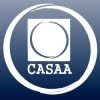





 Store
Store
